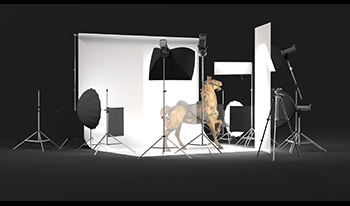
As 3D Imaging for cultural heritage continues to evolve, it’s important to step back and assess the objective as well as the subjective attributes of image quality. The delivery and interchange of 3D content today is reminiscent of the early days of the analog to digital photography transition, when practitioners struggled to maintain quality for online and print representations. Traditional 2D photographic documentation techniques have matured thanks to decades of collective photographic knowledge and the development of international standards that support global archiving and interchange. Because of this maturation, still photography techniques and existing standards play a key role in shaping 3D standards for delivery, archiving and interchange. This paper outlines specific techniques to leverage ISO-19264-1 objective image quality analysis for 3D color rendition validation, and methods to translate important aesthetic photographic camera and lighting techniques from physical studio sets to rendered 3D scenes. Creating high-fidelity still reference photography of collection objects as a benchmark to assess 3D image quality for renders and online representations has and will continue to help bridge the current gaps between 2D and 3D imaging practice. The accessible techniques outlined in this paper have vastly improved the rendition of online 3D objects and will be presented in a companion workshop.
Scott Geffert, "Reference Assets: Leveraging Traditional Photographic Techniques to Improve 3D Object Renditions" in Archiving Conference, 2025, pp 29 - 35, https://doi.org/10.2352/issn.2168-3204.2025.22.1.6
 Find this author on Google Scholar
Find this author on Google Scholar Find this author on PubMed
Find this author on PubMed